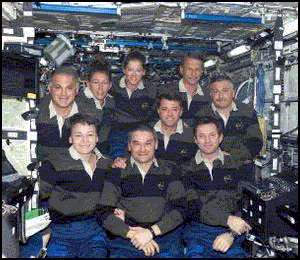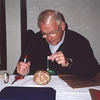The crews of the ISS and space shuttle Atlantis assemble for a group photo in the Destiny laboratory on the ISS. From the left, front row, are Peggy A. Whitson, Valery G. Korzun and Sergei Y. Treschev of the ISS. From the left, back row, are David A. Wolf, Sandra H. Magnus, Pamela A. Melroy, Jeffrey S. Ashby, Piers J. Sellers and Fyodor N. Yurchikhin who travelled to the ISS on the space shuttle Atlantis last week.
Click on image for full size
Courtesy of NASA
Visitors Bring a New Piece to the ISS!
News story originally written on October 23, 2002
After living in space since June, the three people aboard the International Space Station (ISS) were excited to have visitors last week! They welcomed the six-person crew of the space shuttle Atlantis who started a big construction project that will eventually expand the space station’s laboratories.
During the Atlantis crew’s 11-day mission they added a giant new piece onto the space station. The Atlantis crew worked with the crew of the ISS to put the girder, worth $390 million, into place during three space walks. The girder, made of aluminum, is 45 feet long and 15 feet wide. It includes a sophisticated cooling system whose giant radiator extends to be 75-feet long. After future construction projects like this one, the new structure will eventually be 356 feet long and hold the radiators and solar wings that are needed for new laboratories. The next piece will be added when the space shuttle Endeavour visits in November bringing with it both the new piece and a new crew for the ISS.
The space shuttle Atlantis and its crew of six returned to Earth on Friday October 18, 2002 after their 4.5 million-mile visit to the International Space Station.
Last modified October 23, 2002 by Lisa Gardiner.
You might also be interested in:
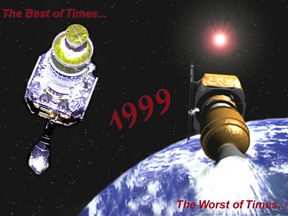
It was another exciting and frustrating year for the space science program. It seemed that every step forward led to one backwards. Either way, NASA led the way to a great century of discovery. Unfortunately,
...more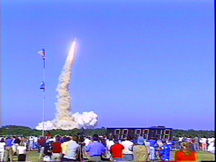
The Space Shuttle Discovery lifted off from Kennedy Space Center at 2:19 p.m. EST, October 29th. The sky was clear and the weather was great as Discovery took 8 1/2 minutes to reach orbit for the Unitied
...more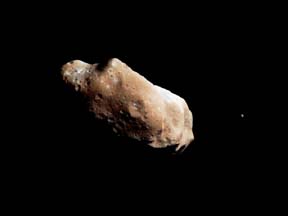
A moon was discovered orbiting the asteroid, Eugenia. This is only the second time in history that a satellite has been seen circling an asteroid. A special mirror allowed scientists to find the moon
...more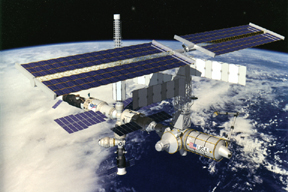
Will Russia ever put the service module for the International Space Station in space? NASA officials are demanding an answer from the Russian government. The necessary service module is currently waiting
...more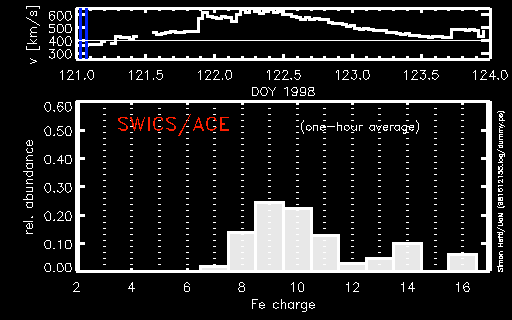
During a period of about two days in early May, 1998, the ACE spacecraft was immersed in plasma associated with a coronal mass ejection (CME). The SWICS instrument on ACE, which determines unambiguously
...more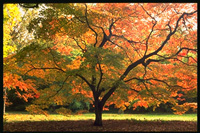
J.S. Maini of the Canadian Forest Service has referred to forests as the "heart and lungs of the world." Forests reduce soil erosion, maintain water quality, contribute to atmospheric humidity and cloud
...more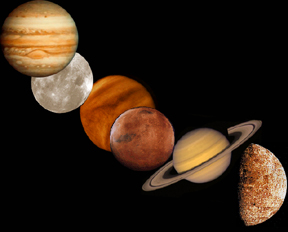
In late April through mid-May 2002, all five naked-eye planets are visible simultaneously in the night sky! This is includes Mercury which is generally very hard to see because of its proximity to the
...more


